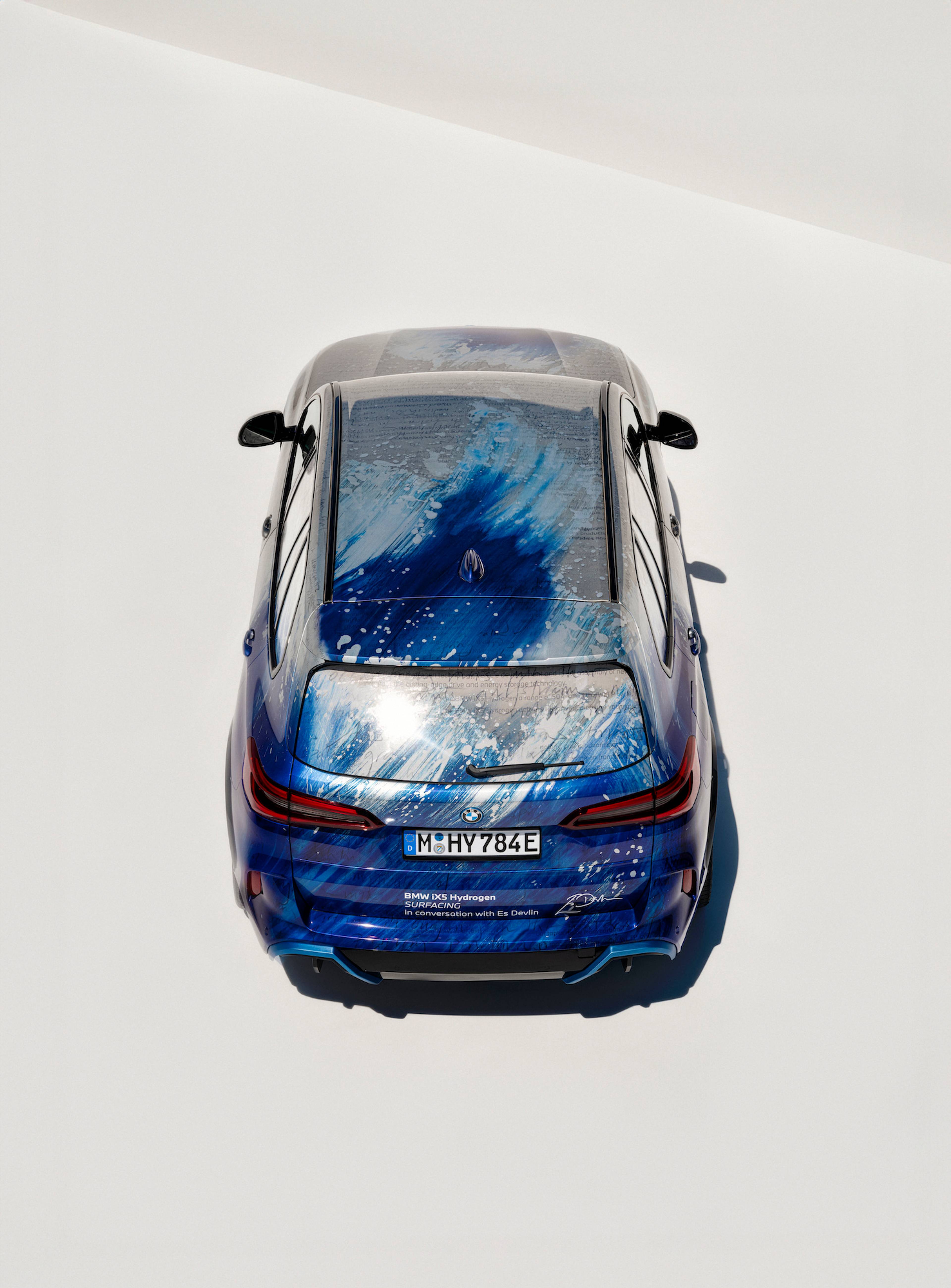Like a steady November rain, the water in Es Devlin’s Surfacing (2024) pours torrentially in Hall 1.1 of Art Basel in Basel 2024. It springs from above a square perimeter of light to form a box made of walls that move, restless but firm, contained. The viewers’ irises contract in reaction to the bright LED lights, pupils shrink and the space seems darker than it is. Surfacing is a cube made of two things you can’t really hold – light and H2O.
But for a moment, the room does go pitch dark; only the sound of perpetual drops stays. When the LEDs rekindle again, five ballet dancers (literally) surface. They begin to move, very slowly, languid yet rigorous, statuesque. Demipointes, micro-gestures as if disassembling classic ballet, get faster, more muscular, ominous. Heavy-bass ambient music by London-based duo Polyphonia paried with the LED lighting growing redder follow the tension of the bodies in motion, clothed only in flesh-colored suits. Five but as one, as liquid beads.
Surfacing is the installation and seven-minute performance that BMW commissioned to British artist and stage designer Es Devlin (*1971), in collaboration with Paris-based choreographer Sharon Eyal, for Art Basel 2024, which the company has partnered with for twenty years. Water is at the heart of the car firm’s newest pilot project, BMW iX5 Hydrogen. Hydrogen – the lightest element of all, and the most abundant in the universe – is set to play a crucial role in the global shift and duty into carbon neutrality. “I learned from the BMW engineers the beautiful symmetry of the system at work within the hydrogen fuel cell,” says Devlin about the test vehicles that could be found outside the fair as shuttle service for VIP card holders. “The energy that is used to separate hydrogen atoms from oxygen is recreated when the oxygen is reunited with hydrogen within the car. The by-product is not only the energy which propels the vehicle, but water.”
Both images: Es Devlin, Surfacing, 2024, Art Basel. Photo: Lucy Emms. Video: Spike
You can even drink it, says one of the BMW engineers in conversation with Devlin, in the soundscape she installed inside the vehicles made for the art fair commuters. On the car body shell, Devlin printed a portion of one of the longest phrases in British literature, from James Joyce’s Ulysses (1922), “describing water in every possible way: pedantic, prosaic, poetic,” as she herself says. “… the restlessness of its waves and surface particles visiting in turn all points of its seaboard: the independence of its units: the variability of states of sea: its hydrostatic quiescence in calm: its hydrokinetic turgidity in neap and spring tides: its subsidence after devastation: its sterility in the circumpolar icecaps, arctic and antarctic: its climatic and commercial significance …”
When something “surfaces,” it means that it emerges after being hidden or submerged, or was simply unseen. Just like Devlin’s aquatic memories as a child that we hear minutes before the ballet dancers manifest, or the obligation to rethink the way we engineer automobiles if the EU aims to be carbon-neutral by 2050, or the corporate social (cutural) responsibility that industrial giants, like BMW, must commit to.
Find out more on Es Devlin's project x BMW, Art Basel in Basel, 2024, here. And here on BMW Group Cultural Engagement.



